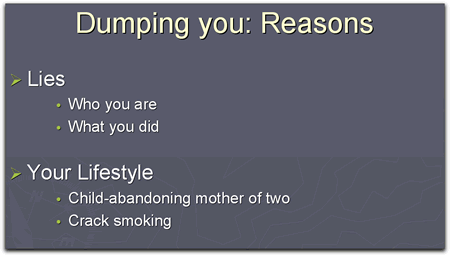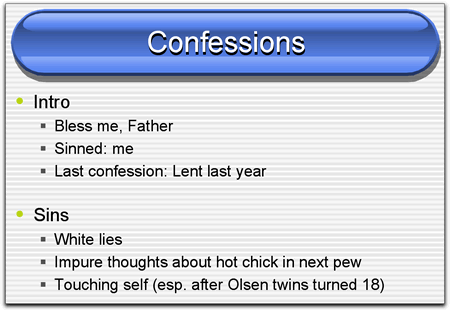For those of you not familiar with Canada, today is that most generic of Canadian holidays, the Civic Holiday,
the defining purpose fo which is to “not work”. Although it is not a
statutory holiday, it’s highly unusual for any non-retial,
non-restaurant employer to ask you to work.
The Civic Holiday is so generic that it goes by different names in
different provinces. In Ontario, the province in which Accordion City
is located, it’s Simcoe Day, named for John Graves Simcoe, the first
Lieutenant (pronounced “leff-tenant”) Governor of Upper Canada (the
original name of Ontario).
I decided to spend the long weekend visiting The Redhead
in Boston, where I am currently filing this blog entry. Unfortunately,
it isn’t a holiday here in the Excited States, so I’m making this entry
from the lounge of The Redhead’s workplace, the Berkman Center for
Internet and Society in a cute little postsecondary education facility
the locals like to call “Hahh-vahhd”.
For some reason, I’m always out of town on a long weekend during which
my name or weblog gets mentioned in Accordion City’s local media.
It’s happened again for the third time this year: on Saturday,
the Globe and Mail
featured the Secret Swing on the front page of section M of the
Saturday paper and a number of my friends and family have already left
messages on my cell phone promising to save me a copy of the paper.
Thanks, guys!
(In case you hadn’t seen it before, the post that got the ball rolling is here.)
The Globe and Mail fail to mention Rannie “Photojunkie” Turingan, whose photos of the
swing are much better than mine (even though mine have the lovely and
talented Christine from the blog Purplecar) and predate mine by weeks.
This omission is even more glaring considering that they phoned him,
asking for the location of the swing. Rannie is the heart and soul of our local blogging group, the GTAbloggers, and I feel that he should be mentioned.
Cory at
BoingBoing linked to my last entry,
The Breakup Style of PowerPoint, which has proven to be a topic to which many people can relate, if the
comments and
trackbacks are any indication.
In honour of the post, I shall provide some notes in point form:
- The
article points out that the swing was installed by local artist Corwyn
Lund, who documented it in the short film (very short, at one minute,
twenty seconds) Swingsite, which debuted last fall. There’s a little more about the film here (you’ll have to scroll down once you hit the page).
- An anonymous reader points to this relationship evaluation form, which is reminiscent of both standardized tests and annual employee reviews.
- Laurent Bossavit says that the PowerPoint-styled breakup is a
form of “incongruent communication”, which is the opposite of the
“congruent communication” style that is emphaszied at the AYE (Amplifying Your Effectiveness) Conference. He also points to an entry in the AYE Conference wiki titled WhyWeDoNotUsePowerPoint.
- 4thAce points out quite correctly that the slide I created breaks
PowerPoint convention by using full sentences. He suggested that it
should look more like this:
- Clay Shirky, who pointed to my article on the Many 2 Many blog, points to an article on breakups by cellphone text messages (“WELCOM 2 DMPSVIL, POPULATN: U!”) . I’ll see your prior reference, Clay, and raise it with this article on Philippine catholic churches banning confessions by texting and raise you this PowerPoint slide for a hypothetical confession:
Wendy and I saw
Harold and Kumar Go to White Castle
yesterday. I haven’t laughed this hard at the movies in ages! John Cho
(“Harold”) was merely okay; it’s Kal Penn (“Kumar”) who really carries
the film. One of my favourite scenes is the daydream sequence in which
Kumar imagines himself falling in love with an marrying a one-pound bag
of very fine weed.
The outdoor shots give away that it was shot in Toronto, especially the
parking lot scenes in which you can see signs for Country Style donuts
and Chapters. In the credits, one of the institutions they thank is
Toronto’s most notorious speakeasy, The Matador.
I don’t recall any scenes that could’ve been shot inside the Matador:
were there any, or are they thanking them for a wonderful night the
cast and crew had there after a shoot?
I had a lovely evening on Saturday night hanging out with Wendy’s friends at
Clery’s, which we followed with a walk through Columbus Ave and then Newbury Street. On Sunday, I had an equally lovely brunch at
Johnny D’s Uptown with the some Boston bloggers including
Michael “Dowbrigade” Feldman,
Cynthia Rockwell, her friend
Guy,
Jessica Baumgart, Sun,
Andrew Grumet and
Matt Stoller.
In response to
my request to record a number just like William Shatner did,
Wil Wheaton left a message in the comments saying “You know how to get in touch, if you’re serious.”
I’m quite serious. Perhaps we can record it at Gnomedex?
I return to
Accordion City tonight and I hope to spend most of tomorrow at the
Exploring
the Fusion Power
of
Public and Participatory Journalism conference and blogging it. Notable friends and acquaintances of mine who will be attending are:
Dan Gillmor,
Jeff Jarvis,
Rebecca MacKinnon and
David Akin. The conference will take place downtown at the Sheraton Centre, which is crawling distance from my house.

